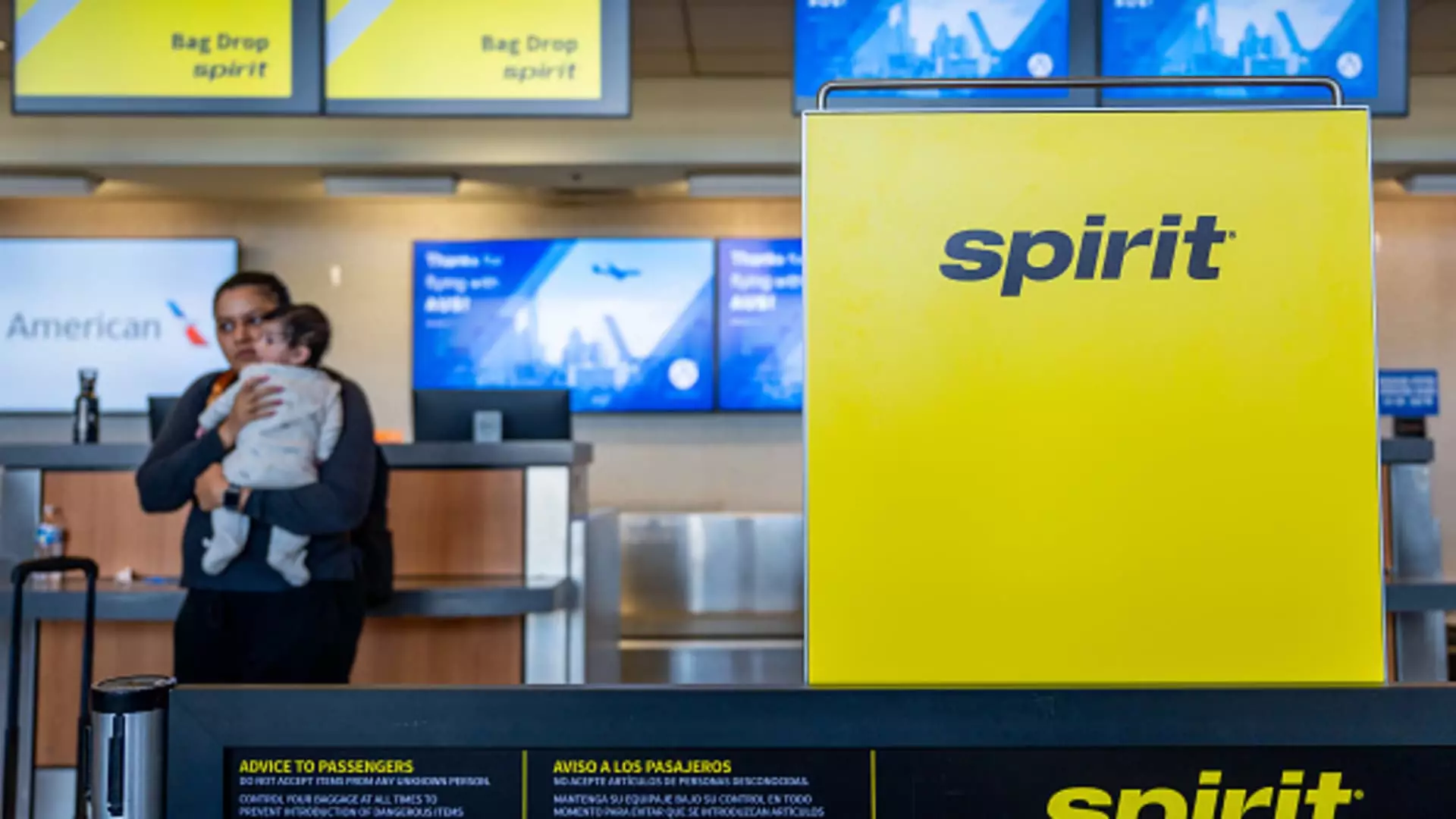Spirit Airlines has made headlines recently by filing for Chapter 11 bankruptcy protection, marking a significant moment in the aviation sector as it is the first major U.S. passenger carrier to take such a step since American Airlines did so over a decade ago. While the term “bankruptcy” often invokes images of complete operational shutdowns, it is critical to understand that Spirit is not ceasing its operations. Instead, this legal move is a strategic decision that will provide the airline with the necessary shield to restructure its debt and continue flying during an unprecedented phase in its history.
The airline’s financial struggles have been in the spotlight since 2019, with losses exacerbated by various challenges, including the COVID-19 pandemic. Amid rising operational costs, Spirit was forced to ground numerous Airbus jets following a significant engine recall. Adding to its difficulties, a federal court blocked Spirit’s attempted merger with JetBlue Airways, stripping the airline of a potential lifeline. As pressure mounted from $1.1 billion in debt payments set to come due next year, Spirit found itself cornered. A looming deadline related to its credit card processing agreement compounded these issues, creating a perfect storm of fiscal instability.
In a proactive measure, Spirit has garnered support from a majority of its bondholders, allowing it to establish a “streamlined” Chapter 11 plan, aiming for an exit from this protective framework by early 2025. This approach illustrates a critical aspect of corporate bankruptcy: it does not represent an end but rather a potentially favorable beginning by allowing the airline to reevaluate and strengthen its position.
Consumer Guidance and Potential Pitfalls
Despite the reassurances provided by CEO Ted Christie to the traveling public, caution is warranted. Travelers are encouraged to remain vigilant regarding any adjustments to Spirit’s flight schedules or decisions on staffing, as these could impact their travel plans directly. Henry Harteveldt, an expert in travel consultation, suggests that while the airline may attempt to maintain operations, future cuts are likely to follow.
As Christmas and New Year’s approach, a lucrative period for airlines, it seems probable that Spirit will aim to keep schedules intact to capitalize on this peak travel season. However, the unpredictability of bankruptcy can complicate matters for consumers. For example, the U.S. Department of Transportation (DOT) has indicated that obtaining a cash refund in the event of a canceled flight or significant schedule change may prove challenging for customers during bankruptcy proceedings. This underlines the importance of understanding consumer rights and protections in such scenarios.
For travelers with booked flights, the potential difficulty in securing refunds becomes particularly relevant. The DOT has clarified that while consumers are entitled to refunds, a company filing for bankruptcy may impose temporary restrictions on issuing these refunds as a measure to conserve cash reserves. Therefore, individuals relying on refunds must be prepared for a potentially drawn-out process.
In light of these complexities, financial experts recommend purchasing airline tickets using credit cards to benefit from enhanced cancellation protections. Additionally, travelers may consider investing in refundable tickets with alternative carriers, although this option can be significantly more expensive. Travel insurance could serve as a safety net for pre-paid expenses that may be affected by Spirit’s bankruptcy, although the efficacy of these policies remains uncertain and contingent on individual plans.
Looking Ahead: Spirit’s Future
Spirit Airlines’ intention to navigate through the Chapter 11 process speaks volumes about its commitment to survival in an evolving market. Historically, airlines that have emerged from bankruptcy often do so in a more streamlined, efficient manner, better positioned to adapt to changing industry demands. With the prospect of potential consolidation in the airline sector on the horizon—especially as other carriers may seek to acquire Spirit’s assets—this pivotal moment could lead to surprises in the market landscape.
Intriguingly, the possibility remains that Spirit could revisit its merger negotiations with Frontier Airlines, especially given the volatility of industry alliances. In an era where the aviation market is replete with uncertainty, one thing stands clear: the next few months will be pivotal for Spirit Airlines as it works to redefine its business model and adapt to the demands of today’s travelers. The emphasis on customer communication and proactive adjustments will be critical as Spirit aims to reassure its passengers while steering through these tumultuous waters.


Leave a Reply